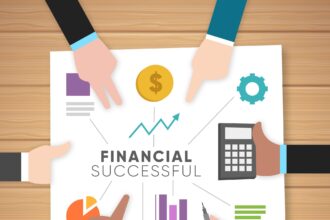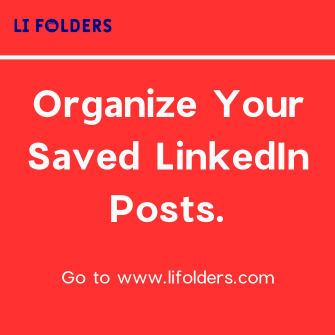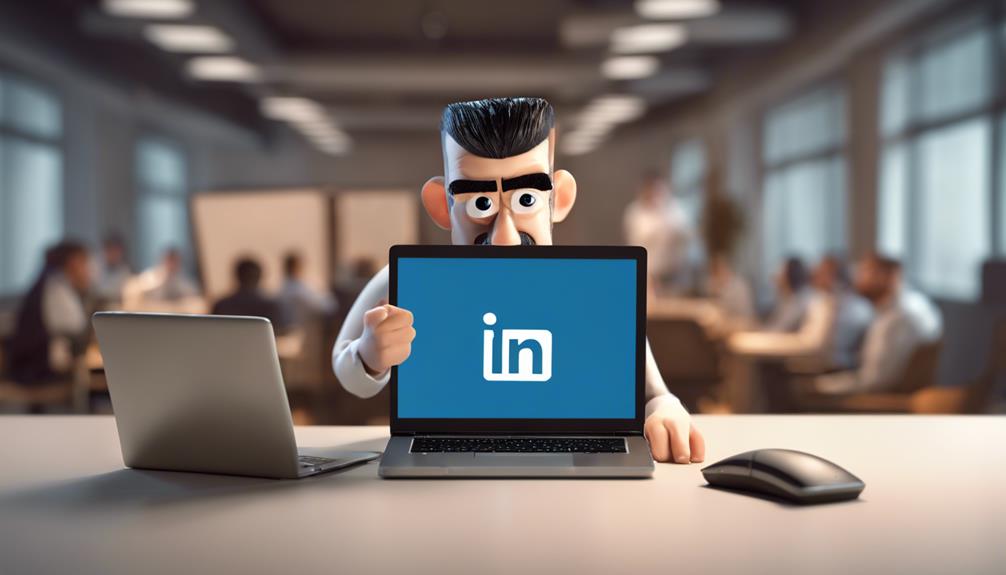
If you suspect you've been blocked on LinkedIn, check a few key signs. You won't be able to view the person's profile, and any previous direct messages might have disappeared. If their profile isn't showing up in search results but is visible when you're logged out, it's likely you've been blocked. Additionally, if you can no longer see updates from them or interact with shared content, these are telltale signs. Remember, missing shared content and endorsements may confirm your suspicions. Explore these aspects further, and you'll better understand your current connections and how to navigate your professional networking environment.
Profile Visibility Changes
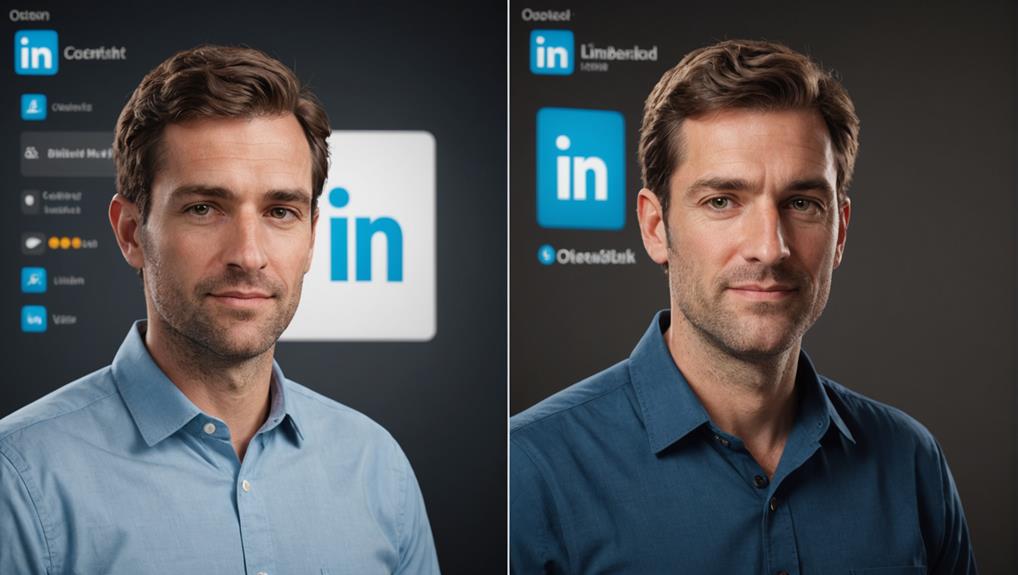
If you suddenly can't view someone's profile on LinkedIn, they might have blocked you. It's a disheartening realization, especially in a professional setting where connections are vital. You're not alone in this; it happens more often than you might think, and it's important to remember that it's not necessarily a reflection of your professional worth or personal qualities.
When you're blocked, you'll also notice that their updates no longer appear in your feed, and their comments or likes on mutual connections' posts are invisible to you. It's like they've disappeared from your LinkedIn world. This can be particularly confusing if you've been actively engaging with their content or were considering them for future opportunities.
Don't let this setback discourage you. Instead, focus on nurturing other professional relationships. LinkedIn is full of potential connections that can offer support, advice, and opportunities. Reach out to others in your field, join groups related to your interests, and participate in discussions. Every interaction is a step towards expanding your network and finding your community on LinkedIn. Remember, each connection you make is a door to new possibilities.
Message Delivery Failures
Another sign that you've been blocked is when your messages fail to deliver. You might type out a thoughtful message, hit send, and then find that it doesn't go through. It's a frustrating experience, especially when you're trying to connect and engage with others in your professional circle.
If you're encountering persistent message delivery failures, it's worth considering that the person might have blocked you. This doesn't necessarily reflect on your worth or professionalism. Sometimes, it's simply a matter of differing goals or the need for privacy in someone else's career management strategy. Remember, LinkedIn is a tool for building connections, but it's also a platform where users must manage their own boundaries and interactions.
Don't let this discourage you. Instead, use it as an opportunity to focus on other valuable connections. There are plenty of professionals out there eager to collaborate and share ideas. Keep engaging, keep networking, and remember that each connection you make is a step forward in your professional journey. It's all part of navigating the complex world of online professional relationships.
Sudden Loss of Connection
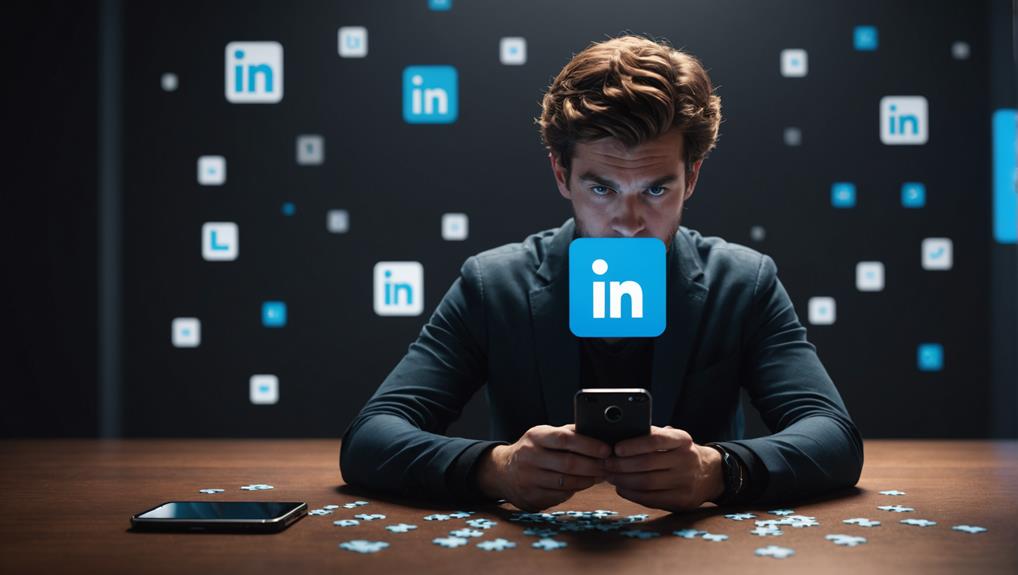
You might notice that you suddenly can't view a connection's profile or interact with their content, which often indicates they've blocked you. It's a jarring experience, especially if you valued the professional relationship. This abrupt absence might leave you feeling puzzled and perhaps a bit isolated in your network.
When someone blocks you, you're not only removed from their network, but your mutual visibility and interactions on LinkedIn come to a halt. You won't see their updates, comments, or any shared articles. It's as if your professional paths have been instantly severed without a goodbye or an explanation.
It's natural to wonder about the reasons behind such a decision. Often, it could be a misunderstanding or a desire for privacy on their part. It's important not to jump to conclusions or feel rejected. Instead, focus on the connections you still have and continue to nurture your network. Everyone seeks a sense of belonging and mutual respect, and maintaining a positive, professional attitude on LinkedIn will help you build and sustain those crucial relationships. Remember, it's about the quality of connections, not just the quantity.
Inability to Endorse or Recommend
A clear indication that someone may have blocked you on LinkedIn is if you're unable to endorse or recommend their skills. Normally, when you view a connection's profile, you can easily spot the option to endorse their skills or write a recommendation. This not only helps them enhance their professional credibility but also strengthens your relationship.
If you find that these options are missing, it's a strong sign that you've been blocked. It's natural to feel a bit left out or confused when this happens. Remember, it's important not to take this personally. There are numerous reasons why someone might choose to limit their interactions, and it may not necessarily reflect on your professional relationship or personal connection.
Instead, focus on maintaining and nurturing your other professional relationships. Continue to endorse and recommend your other connections, as this can foster a sense of community and belonging among your network. These actions help build a supportive professional environment where everyone feels valued and connected.
Thus, while you might feel sidelined by not being able to interact with someone's profile, redirect your energy towards those who appreciate and welcome your endorsements and recommendations. This approach not only upholds your network's integrity but also reinforces your role within it.
Disappearance From Search Results

If someone's profile no longer appears in your LinkedIn search results, they might have blocked you. It's a confusing and sometimes unsettling realization. You're used to seeing their professional updates and suddenly, there's a void where their contributions used to be.
This disappearance can be particularly disconcerting if you've interacted with them regularly. It's natural to wonder about the change, and you might even feel a bit excluded. Remember, LinkedIn is a dynamic platform where connections can shift just like in any professional environment. People often adjust their privacy settings or manage their connections for myriad personal or professional reasons.
To confirm your suspicions, you could try searching for their profile from a different LinkedIn account, such as one belonging to a friend or colleague. If their profile appears in search results on another account but not yours, it's likely you've been blocked.
While it's easy to jump to conclusions, consider focusing on nurturing your other connections. LinkedIn is about community and collaboration. Engaging more with other colleagues can open new doors and opportunities, making the platform a continuously enriching experience despite occasional setbacks.
Missing Shared Content
Another sign that you might have been blocked is when their shared content no longer appears in your feed. It's unsettling, isn't it? You're used to seeing updates, articles, or posts from a contact, and suddenly, there's nothing. If you're missing these shared insights, especially if they were part of your routine networking or learning resources on LinkedIn, it may indicate they've blocked you.
It's more than just missing out on content; it's about feeling left out of the loop. This shift might make you feel isolated from mutual connections or industry news that was once readily accessible through their shares. Remember, it's not just about the information, but also about the sense of community and connection to your professional circle.
If you suspect you've been blocked because you're not seeing someone's content anymore, try to cross-check with mutual connections. See if they can still see the posts that you can't. This step can confirm your suspicions without jumping to conclusions.
Being blocked can stir up a mix of emotions, but focus on maintaining and building other connections. LinkedIn is vast, and there are plenty of opportunities to engage with new professionals and content.
Altered Group Interactions
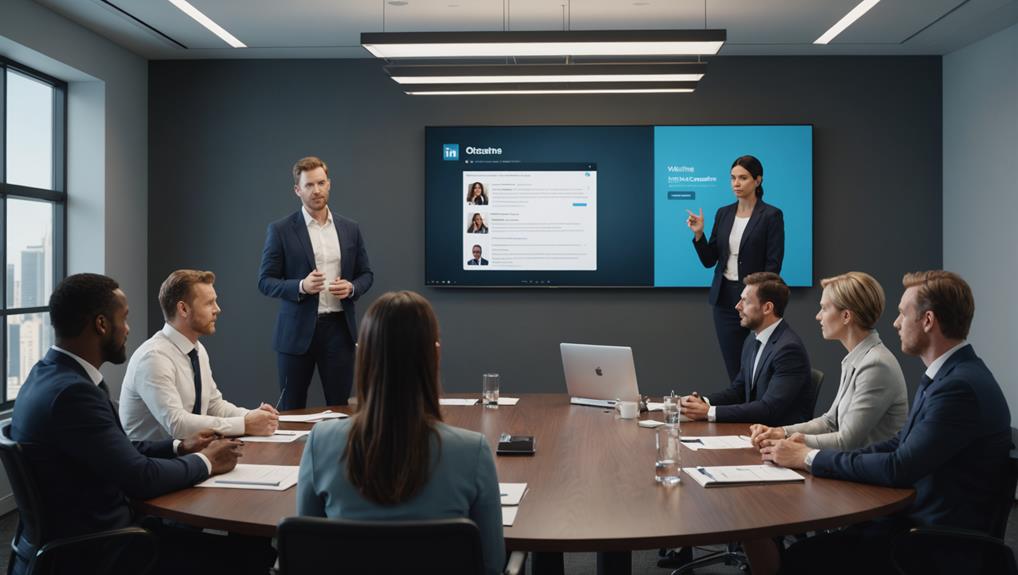
You might notice you're blocked if your interactions in shared LinkedIn groups suddenly change. This can feel disconcerting, as these groups often serve as a hub for professional camaraderie and growth. If you find that your comments or posts aren't receiving any responses or engagement from a specific member, it's possible they've blocked you. Normally, lively discussions and mutual feedback are the norm, so a sudden silence from one end can be quite telling.
Also, consider the visibility of your posts. If you're used to seeing reactions or comments from a particular person and that stops abruptly, they might have taken steps to remove you from their LinkedIn circle. This action can create a ripple effect, not just in your direct interactions but also in your sense of belonging within the group. It's important to remember that connections on LinkedIn are about mutual respect and professional growth. If you're sensing a gap, it might be worth reaching out to mutual connections to verify if you've indeed been blocked or if something else is at play, keeping your approach professional and non-confrontational.
Notification Inconsistencies
Notice any oddities in the notifications you receive, as this may also indicate that someone has blocked you on LinkedIn. If you're accustomed to seeing interactions from a specific contact—likes, comments, or shares on your posts—and these suddenly stop without an apparent reason, it might be a clue. You're part of this professional community for mutual growth and support, so when usual patterns change, it's natural to feel a bit out of the loop.
Are you missing notifications you'd typically get when someone engages with your content? It's not just about missing out; it's about feeling disconnected from your network. This gap could be because someone who previously interacted with your posts has now blocked you, preventing any of their activities from showing up in your feed.
Viewing Profile on Incognito
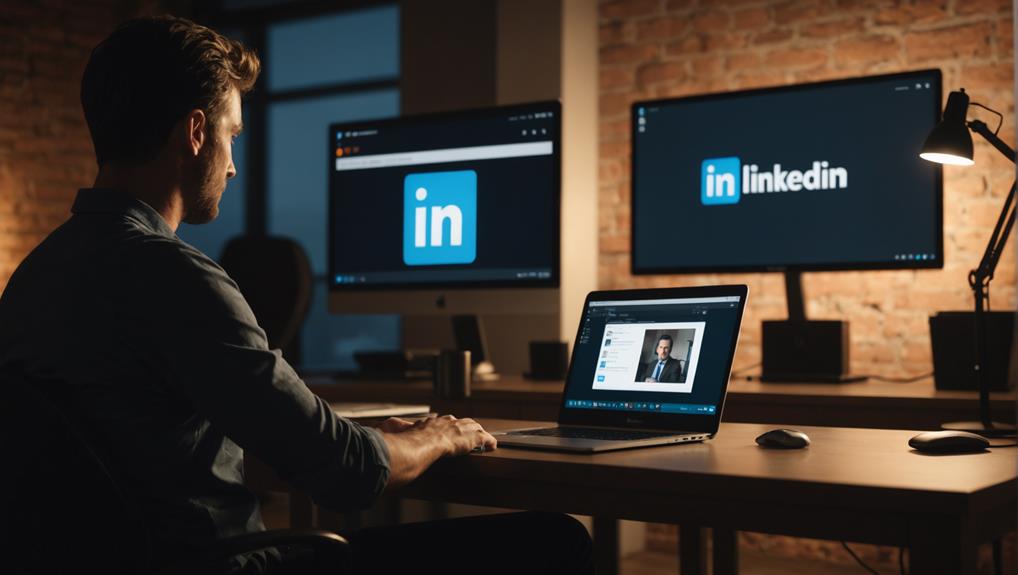
If someone's profile suddenly becomes inaccessible through your regular LinkedIn account, trying to view it in incognito mode might reveal whether they've blocked you. This method lets you bypass some personalized settings and cookies, presenting you as an anonymous user to LinkedIn's servers. It's a straightforward way to check without altering your account or alerting the other person.
You're not alone in feeling out of the loop when you can't access a connection's profile as usual. It's natural to want to understand why you're seemingly cut off from someone in your professional circle. When you open your browser in incognito mode and search for their profile, remember, you're just gathering information to grasp the situation better. You're looking to stay informed and connected, which is important in nurturing your professional relationships.
While this approach can provide clues, it doesn't always give a definitive answer. Profiles may appear differently or not at all, based on privacy settings or how LinkedIn manages anonymous views. Nevertheless, it's a discreet first step in maintaining your network's integrity without stepping on any toes.
Confirming a Block
How can you confirm that you've been blocked on LinkedIn? It's not always straightforward, but there are a few telltale signs that can help you figure it out. You're part of a community on LinkedIn, and it's natural to worry if you suddenly can't interact with someone you used to connect with.
Firstly, try to search for the person's profile. If you can't find it via search, but you can see it when logged out or through another account, it's likely you've been blocked. Additionally, if you had a previous conversation with this person in your LinkedIn messages and now those messages are gone, that's another strong indicator.
Another step is checking your connections list. If they were a connection and now they're not, and you didn't remove them, they might have blocked you or deleted their account. However, if other signs also point to a block, it's more conclusive.
Conclusion
You've noticed some odd changes: profiles vanishing, messages undelivered, and connections dropping? Chances are, you've been blocked on LinkedIn. If endorsements and group interactions also seem off, that's another red flag. Try searching in incognito mode; if you still can't find the profile, it's likely confirmed. Though it might feel personal, remember, blocking is often just a way for people to manage their digital boundaries. Keep networking and don't let this hiccup slow you down!




